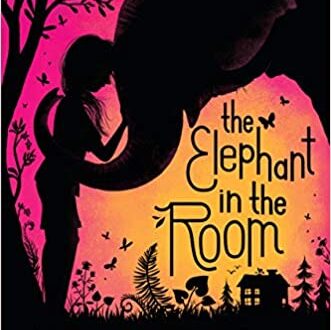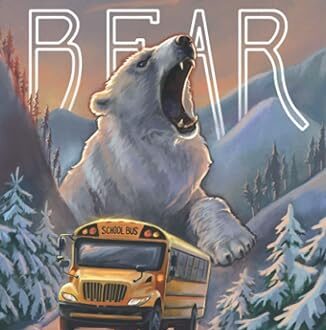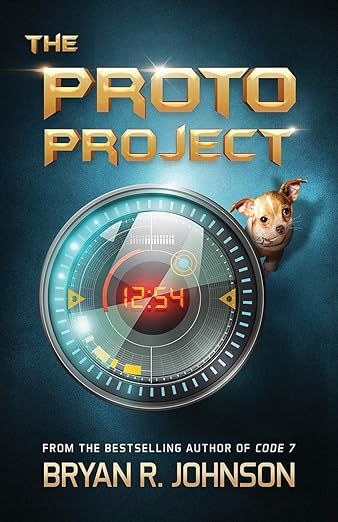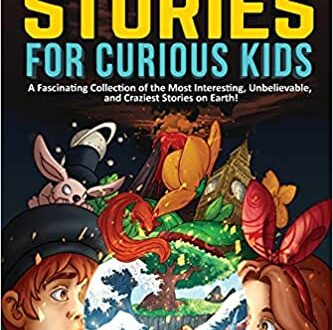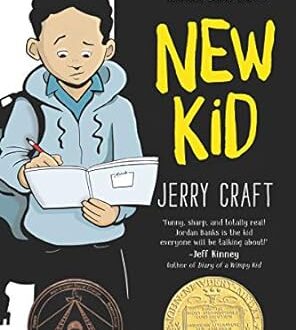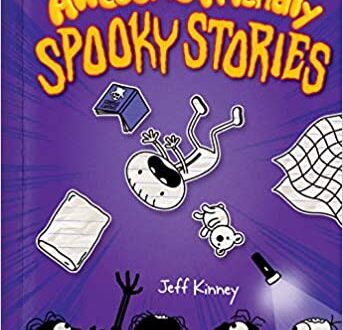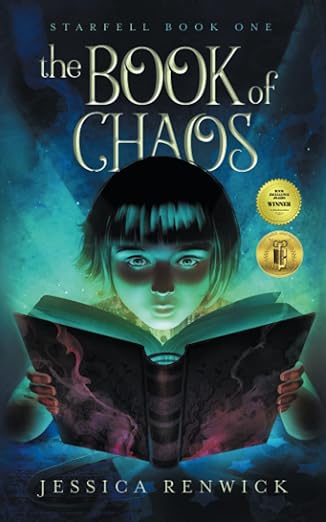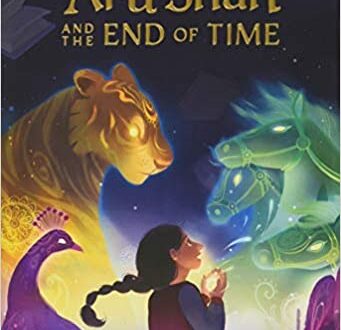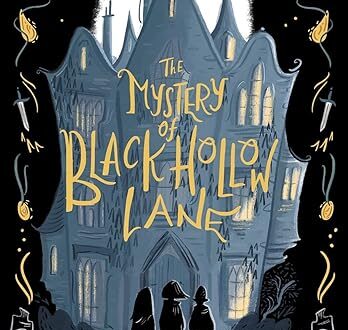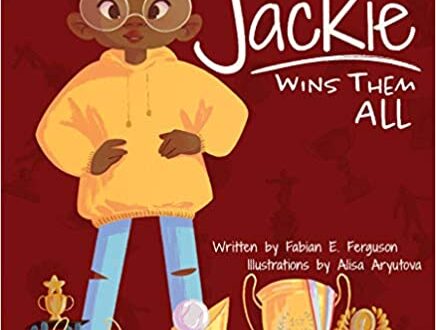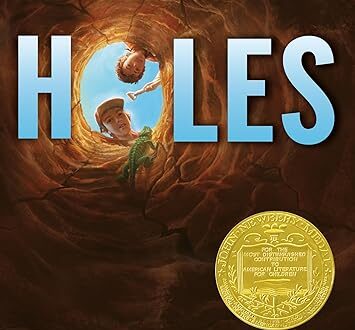-
The Stars Beneath Our Feet
It’s Christmas Eve in Harlem, but twelve-year-old Lolly Rachpaul and his mom aren’t celebrating. They’re still reeling from his older brother’s death in a gang-related shooting just a few months earlier. Then Lolly’s mother’s girlfriend brings him a gift that will change everything: two enormous bags filled with Legos. Lolly’s always loved Legos, and he prides himself on following the kit instructions exactly. Now, faced with a pile of building blocks and no instructions, Lolly must find his own way forward.
His path isn’t clear—and the pressure to join a “crew,” as his brother did, is always there. When Lolly and his friend are beaten up and robbed, joining a crew almost seems like the safe choice. But building a fantastical Lego city at the community center provides Lolly with an escape—and an unexpected bridge back to the world.
For Readers 10-12 from The Coretta Scott King–John Steptoe Award winning author David Barclay.
-
Reaching for the Skies—Exploring the Wonder of Ferris Wheels!
Hello, young thrill-seekers and adventure enthusiasts! Get ready to embark on a breathtaking ride that will take you high above the ground and fill your heart with excitement. Today we’ll explore the history and appeal of Ferris wheels. Ferris wheels are more than just a dizzying experience. They are engineering marvels that offer panoramic views and unforgettable moments. So, buckle up, hold on tight, and let’s take a spin as we delve into the wondrous world of Ferris wheels, where fun and fascination await at every turn!
A Ferris wheel is an amusement ride consisting of a giant vertical revolving wheel with passenger cars suspended on its outer edge. It is commonly called a big wheel in the United Kingdom.
The Ferris wheel got its name from George Washington Gale Ferris, Jr. who made one for Chicago’s World’s Columbian Exposition in 1893.
With a height of 264 ft, the Ferris wheel was the tallest attraction at the World’s Columbian Exposition in Chicago, Illinois, where it opened to the public on June 21, 1893. It was intended to rival the 1,063 feet Eiffel Tower, the centerpiece of the 1889 Paris Exposition.
More than 100,000 parts went into Ferris’ wheel, notably an 89,320-pound axle that had to be hoisted onto two towers 140 feet in the air. Over the next 19 weeks of the World’s Columbian Exposition, over 1.4 million people paid 50 cents for a 20-minute ride and access to an aerial panorama few had ever seen before.
But when the fair gates closed, Ferris became immersed in a tangle of wheel-related lawsuits about debts he owed suppliers and that the fair owed him. In 1896, bankrupt and suffering from typhoid fever, he died at age 37. A wrecking company bought the wheel and sold it to the 1904 Louisiana Purchase Exposition in St. Louis. Two years later, it was dynamited into scrap.
So died the one and only official Ferris wheel. But the generic term Ferris wheel is now used for all such structures, which have become the most common type of amusement ride at state fairs in the United States.
Some of the largest modern Ferris wheels have cars mounted on the outside of the rim, with electric motors to independently rotate each car to keep it upright. People sometimes refer to these wheels as observation wheels and their cars as capsules. However, these alternative names are also used for wheels with conventional gravity-oriented cars.
A Ferris wheel (sometimes called a big wheel, observation wheel, or, in the case of the very tallest examples, giant wheel) is a nonbuilding structure consisting of a rotating upright wheel with multiple passenger-carrying components (commonly referred to as passenger cars, cabins, tubs, capsules, gondolas, or pods) attached to the rim in such a way that as the wheel turns, they are kept upright, usually by gravity.
Since the original 1893 Chicago Ferris wheel there have been nine world’s tallest-ever Ferris wheels. The current record holder is the 550 feet High Roller in Las Vegas, Nevada, which opened to the public in March 2014.
A Ferris wheel has fixed cars, but an eccentric wheel has cars that move as it rotates.
The two most famous eccentric wheels are Wonder Wheel, at Deno’s Wonder Wheel Amusement Park, Coney Island in New York City, and Pixar Pal-A-Round (previously Sun Wheel and Mickey’s Fun Wheel), at Disney California Adventure, California. The latter is a replica of the former. There is a second replica in Yokohama Dreamland, Japan.
So now that you know the history of Ferris wheels, enjoy the next one you ride.
AIME
-
The Proto Project: A Sci-Fi Adventure
When Jason meets his mom’s billion-dollar invention, an artificial intelligence device named Proto, he accidentally gets caught up in a mysterious adventure. Proto goes missing, and then people go missing. Now Jason and his coolest-neighbor-ever Maya must risk their lives to prevent global mayhem. But who is behind this devious plot? Is it another AI? The FBI? Or any other abbreviation with an I? What exactly is there to learn about artificial and human intelligence while fighting for your life against a legion of furry puppies or a battalion of drones? A lot—if you live to tell about it.
Jason and Maya set out on an adventure of a lifetime.
For Readers 8-10 from author Bryan R. Johnson.
-
Meet the World’s Fastest Runners
Hey there, young athletes, and fans of speed! Get ready for amazement as we explore the exciting world of the world’s fastest runners. Today we’ll lace up our virtual running shoes and embark on a journey to discover the remarkable achievements and jaw-dropping feats of these exceptional athletes. From breaking records to leaving competitors in the dust, the world’s fastest runners have captured the imagination of sports enthusiasts worldwide. So, get ready to sprint alongside us as we dive into the world of speed, endurance, and the pursuit of greatness. Let’s meet the superstars who have blazed a trail on the track and continue to inspire us all with their incredible talents!
The 10-second mark had been widely considered a barrier for the 100 meters in men’s sprinting. The first man to break the 10 second barrier with automatic timing was Jim Hines at the 1968 Summer Olympics. Jim Hines, Ronnie Ray Smith and Charles Greene were the first to break the 10-second barrier in the 100 m, all on 20 June 1968, the “Night of Speed.” Since then, over 170 sprinters have run faster than 10 seconds.
Major 100-meter races, such as at the Olympic Games, attract much attention, particularly when the world record is thought to be within reach.
The men’s world record has been improved upon twelve times since electronic timing became mandatory in 1977. Usain Bolt set a new world record of 9.58 seconds in Berlin in 2009.
The current women’s world record of 10.49 seconds was set by Florence Griffith-Joyner of the US, at the 1988 United States Olympic Trials in Indianapolis, Indiana, on July 16, 1988. Breaking Evelyn Ashford’s four-year-old world record by .27 seconds.
So far, only male sprinters have beaten the 100-meter 10-second barrier, the vast majority of them being of West African descent. Namibian (formerly South-West Africa) Frankie Fredericks became the first man of non-West African heritage to achieve the feat in 1991 and in 2003 Australia’s Patrick Johnson (an Indigenous Australian with Irish heritage) became the first sub-10-second runner without an African background.
In 2010, French sprinter Christophe Lemaitre became the first Caucasian to break the 10-second barrier. In 2017, Azerbaijani-born naturalized Turkish Ramil Guliyev followed and in 2018, Filippo Tortu became the first Italian to run under 10-seconds.
In the Prefontaine Classic 2015 Diamond League meet, Su Bingtian of China ran a time of 9.99 seconds, becoming the first East Asian athlete to officially break the 10-second barrier. Then Chinese sprinter Xie Zhenye ran 9.97 on June 19, 2018. On August 1, 2021, Su improved his Asian record at the Olympic semifinal in Tokyo with a time of 9.83. On September 9, 2017, Yoshihide Kiryū became the first man from Japan to break the 10-second barrier in the 100 meters, running a 9.98 (+1.8) at an intercollegiate meet in Fukui. Kiryu’s Japanese teammate Yuki Koike followed suit and ran 9.98 on July 20, 2019, and Ryota Yamagata ran 9.95 on June 6, 2021.
British sprinter Adam Gemili, an athlete with an Iranian-Moroccan ethnic background, became the first sprinter of Middle-Eastern and North African ancestry to legally break the barrier on June 7, 2015, having done so earlier in the same season with an excessive wind reading.
On July 3, 2022, Yupun Abeykoon became the first Sri Lankan as well as first South Asian sprinter in history ever to break the 10-second barrier when he won the Resisprint International 2022 title in Switzerland. Yupun’s achievement also meant Sri Lanka became the 32nd country in the world to have a sub-10 sprinter, and Yupun also became the 167th member of the sub-10 club.
So, boys—and girls! Put on your best racing shoes and hit the running track. There’s a 10-second record holders’ list waiting for your name to appear on it.
AIME
-
Kestrel Island
A thrilling adventure story about friendship, courage and never giving up.
In a sleepy English seaside town, Sophie Watson is enjoying a peaceful holiday in the sunshine. But when she befriends a mysterious and charismatic girl called Sienna, she is drawn into a heart-stopping adventure where the future security of the world may be under threat.
To find out the truth, they must go to Kestrel Island. The plot they uncover is more terrifying than anything they could have imagined.
When they are discovered by armed guards, they are shot at and chased across the island. But they know they have to make it back to the mainland alive.
The beautiful island may be in peril, but the secret the girls have uncovered threatens the world.
If you’re looking for an action-packed adventure with surprising twists and a thrilling climax, this is it.
Sophie and Sienna fight to save a beautiful island from a gang of unscrupulous developers and discover a plot that is far more sinister and dangerous.
For Readers 9-13 from author A.B. Martin.
-
Spelunking for the Adventurous!
Greetings, young explorers and lovers of hidden wonders! Are you ready to embark on a thrilling expedition into the mysterious world beneath our feet? Today, we’ll gear up with helmets and headlamps as we dive deep into the exhilarating realm of spelunking, also known as cave exploration. Spelunking is not just about descending into the darkness; it’s a chance to uncover the secrets of ancient formations, witness unique ecosystems, and marvel at the awe-inspiring beauty that lies hidden beneath the Earth’s surface. So, grab your sense of adventure, strap on your backpacks, and join us as we venture into the captivating underground world of spelunking, where every step reveals a new wonder waiting to be discovered!
First, what in the world is spelunking?
Short and sweet, it is the exploration of cave systems, especially as a hobby. (Just so you know, a cave system is a series of caves connected by passageways.)
The first thing you need to know about spelunking and caving is to never, ever, ever enter a cave alone. (Just so you know, caving is the exploration of the caves themselves.)
There is something about caves and cave systems that is mysterious and fascinating. Cave systems are an unexplored universe of mysterious tunnels, chambers, waterfalls, tight spots, and creatures.
Spelunking is more than just a walkthrough in a beautiful cave; it requires hiking, climbing, crawling, swimming, rappelling, and wriggling through tight spots, among others. With the chance of doing some, if not all, of the previously mentioned activities, we can say that spelunking comes with some degree of danger. But, with proper attention to safety, this extreme sport can be as safe as a regular walkthrough.
Here are some tips that will keep your spelunking experience as safe and thrilling as possible.
Educate yourself about spelunking. Spelunking, also known as caving, can vary from a light exercise walk and climb to an extreme and physically demanding rappel. Know how challenging the cave might be and if you are physically capable of doing it.
ALWAYS have a companion when spelunking – Never go caving alone. A small group of 4 to 6 people is preferable. If you’re not hiring a guide, make sure that at least two of your companions are experienced cavers and know the cave well.
Have the proper caving gear – Always carry a hard hat, a headlight, and proper shoes. Your light is the most important piece of equipment, so have three and keep extra batteries handy. Sometimes wearing gloves and kneepads–also known as a spelunker’s best friends–will save you from a lot of pain. You might also want to carry a facemask; some caves have a strong guano smell.
Wear proper clothes – Please… don’t wear your Sunday best. An old pair of jeans and a t-shirt will suffice. Your clothes will get wet and dirty; and, in most cases, don’t expect to get them clean. Your clothes should have a good fit on you and shouldn’t limit your movements’ flexibility.
Most caves have comfortable warm weather, but some chambers can go down to 50 degrees Fahrenheit (10 degrees Celsius), so you might want to dress in layers with synthetic fabrics, like nylon and polyester. These fabrics dry faster–reducing the chance of hypothermia–and they are more resistant to scrapes and snags common to spelunking.
Test your ropes – Ropes are one of the most important pieces of equipment when you do an extreme spelunking with rappelling. Test your lifeline before caving; it must support you and your gear in a lingering hang. Use a safety line as a backup in case of a fall.
Carry a First Aid Kit – Cuts and scratches do occur often. Clean and medicate them immediately to prevent infections.
Check your breathing – Deep caves can have a reduced amount of oxygen. Check for oxygen using a match, lighter, or candle. If you start feeling dizzy, out of breath, or have a burning sensation in your throat, stop and exit the cave at a steady pace.
Keep your energy – Always carry energy bars and water to replenish your energy. Take breaks when necessary.
Never go caving when it’s raining – Caves can flood extremely fast and more often than not, it is unannounced. Don’t take that risk.
Leave Markers – As you go further in, leave markers to show your way out. On your return, pick up your markers. Don’t leave them in the cave as waste.
Don’t take unnecessary risks – Always look for the easiest way to navigate the cave. When you have the choice of jumping over a crevice or taking 5 minutes to go around it, choose to go around it. Injuries, even the smallest ones, are magnified by the difficulty of evacuating an injured person out of the cave.
Be patient and don’t force things – Go slow and take your time while crossing or crawling through tight spaces; a bad position can injure or cramp your muscles. If you don’t fit, don’t force it. Don’t run the chance of getting stuck.
Know what to do in case someone gets injured – If someone gets injured and can’t make it out of the cave on their own, stop there and send two or more people for help–police or paramedics. Make sure they know the exact location where the injured person is and the extent of the injuries. Never leave the injured alone.
Inform others about your caving plans – Sometimes you can get lost in a cave. In such cases, don’t panic and stay put. Always let people know about your spelunking plans. Inform more than one person with details, like when you are going, which cave, with whom, and when you plan to return.
If you are adventurous and haven’t tried spelunking, give it a try. Who knows…you might even get hooked on this thrilling and exploratory sport.
AIME
-
The Book of Chaos – Starfell
Twelve-year-old Fable Nuthatch has something that nobody else in Larkmoor has—magic. But living under the roof of her overprotective aunt, she’s forced to hide it from the world.
When a strange book lands in her lap and her cousin vanishes into its pages, she follows, hurtling into an enchanted forest far from the rolling hills of her home. Starfell is filled with unusual people and mystical creatures. Here, she’s accepted for who she is, and she’s finally free to embrace her powers.
But not everything is bright in Starfell. A darkness looms over the land, and her cousin is still missing. After following a trail of clues about other disappearances and the mysterious Fae Witch, Fable and her friends confront a deadly secret—one that is connected to Fable and her family.
With help from her peculiar new friends, Fable must learn to trust in herself or risk losing her cousin forever. Can she face the wicked secret hunting her and save him before it’s too late?
-
Picture Perfect—Unlocking the Secrets to Captivating Photography!
Hello, aspiring young photographers and visual storytellers! Are you ready to embark on a captivating journey where you can freeze moments in time and bring your imagination to life through the lens of a camera? Today we’ll dive into the exciting world of photography and uncover the secrets to capturing stunning images that will make your friends and family say, “Wow!” Taking great photos is more than just clicking a button; it’s an art form that allows you to express your creativity, tell stories, and see the world through a new lens. So, grab your cameras and let’s uncover the tips and tricks that will help you take your photography skills to the next level. Get ready to capture moments that will last a lifetime with our guide to taking great photos!
Photography is a great way to capture what is going on in your life and to make memories with your friends.
There are two main types of photographers, those who want to create art using photography and those who want to document the world from their perspective.
Which type are you?
Photography is all about the art of seeing and how we perceive the world around us. It’s no secret that we all see things differently and it’s the art and skill of seeing that we struggle with as beginners of photography. Some people have a natural eye for seeing photographically, while others need a little help along the way. Learning how to develop your photographic eye, seeing the best compositions and lightings is a skill that you develop over time and yes, it takes practice.
What does having a photographic eye actually mean?
This simply means being able to look around you and see both the opportunities for a great photo and also see how you would create the shot.
A great place to start in learning photography is learning how to slow down and see. Taking in your surroundings and challenging yourself to see things from a different perspective. With the pictures you take, you want to portray a feeling, a story, and take pride in the new discovery of joy and beauty. But most of all, you want to have fun and create memories to share with your family and friends. Luckily, your cell phone has a built-in camera that enables you to take a picture anytime you like.
Here are some photography tips you might want to keep in mind:
- Experiment with different angles, perspectives, and lighting. Try to capture something interesting or unusual in your photos.
- Check your backgrounds and make sure they are not too cluttered or distracting. You want your subject to stand out.
- Hold the camera straight and avoid tilting it too much. This will help you avoid crooked or distorted photos.
- Get in close to your subject and fill the frame with what you want to photograph. This will help you show more details and emotions.
- Take lots of photos and don’t be afraid to make mistakes. You can always delete the ones you don’t like and learn from them.
- Find a point of interest in your photo and place it off-center. This will create a more dynamic and balanced composition.
- Learn some basic photography terms such as depth, focus, and aperture. These will help you understand how your camera works and how to control the exposure, sharpness, and blur in your photos.
- Have fun and enjoy taking photos. Photography is a creative and rewarding hobby that can help you express yourself and capture memories.
Taking great photographs with your cell phone camera is possible if you follow some simple tips and tricks. Here are some of them:
- Use the light to your advantage and avoid shooting in dark or harsh conditions. Look for natural light sources such as windows, lamps, or neon signs.
- Adjust the exposure to brighten or darken your photo as needed. You can usually do this by tapping on the screen and sliding your finger up or down.
- Use the grid lines to align your shot and follow the rule of thirds. This means placing your subject or point of interest at the intersection of the grid lines, not in the center.
- Set your camera’s focus by tapping on the screen where you want the sharpest area to be. This will also affect the depth of field and blur in your photo.
- Use HDR mode when shooting scenes with high contrast, such as a bright sky and a dark foreground. This will balance the exposure and capture more details in both areas.
- Avoid using flash as much as possible, as it can create harsh shadows and unnatural colors. If you need more light, use a separate light source or an external flash.
- Never use digital zoom as it will degrade the quality of your photo. Instead, get closer to your subject or crop your photo later.
- Use camera modes, HDR, and RAW if your phone supports them. These can help you capture different types of scenes, such as portraits, landscapes, or night shots, with better results.
- Experiment with different editing apps to enhance your photos and add some creative effects. You can adjust the brightness, contrast, color, sharpness, and more.
- Have fun and try different angles, perspectives, and compositions. Don’t be afraid to make mistakes and learn from them.
Taking pictures is fun. So, enjoy yourself and start by looking around you and seeing your everyday world with your “photographic eye.”
AIME
-
Pettikin
Aunt May’s funeral was strange, but things get stranger when fourteen-year-old Allie Thomas encounters Pettikin Periwinkle, a gnome with a love of sweets and a penchant for screaming. Pettikin is stranded on Earth after the death of its only Gatekeeper.
To get Pettikin home, Allie must enlist the help of a powerful, yet unconventional, Guardian and prove to him that she has what it takes to be a Gatekeeper. With three alpacas to guide her, a month’s supply of cookies, and zero training, she sets off with Pettikin through three secret realms. But there is a Contractor here working with the evil race of sslorcs to stop her. And on top of that, she just might be falling for the Guardian.
For Readers 9-12 from author Abby Smith.
-
Paramedics—Life Saving First Responders
What Is a Paramedic?
A paramedic is a specially trained medical technician licensed to provide a wide range of emergency services (such as defibrillation and the intravenous administration of drugs) before or during transportation to a hospital. An EMT—Emergency Medical Technician—is a specially trained medical technician certified to provide basic emergency services (such as cardiopulmonary resuscitation) before and during transportation to a hospital.
They are not doctors, nurses, or physician’s assistants. The word paramedic is a combination of two terms. “Para” means next to, and “medic” means doctor. So, it means that paramedics work alongside doctors, though not always physically. They can provide life-saving treatment for someone until they can get to a doctor.
Paramedics are not Emergency Medical Technicians (EMTs), though many EMTs become paramedics. EMTs have the skills to stabilize and transport people who call for emergency medical care. They can use basic equipment in an ambulance. But they aren’t allowed to give treatments that break the skin, with a few exceptions.
Paramedics have more training and can provide more advanced emergency medical care. They can use basic and advanced equipment on ambulances. In their training, they can learn how to start intravenous lines (IVs) and manage compromised airways.
Paramedics primarily work in emergency rooms and ambulances where they treat people with urgent problems. They may also work in specific settings, such as:
- On cruise ships
- On oil-drilling platforms
- In air rescue transport
- On ocean rescue teams
- At special events like music festivals
- On S.W.A.T. teams
- On firefighting teams
What Does a Paramedic Do?
Paramedics work on teams that respond to medical emergencies. They are supervised by a doctor, though the doctor is usually not on site. They may communicate with a doctor via phone, radio, or pre-written orders.
Paramedics also make some decisions about patient care and supervise the other members of their team who have less training, like EMTs.
On calls, paramedics may:
- Do CPR
- Use a defibrillator
- Give IV medication
- Clear airways
- Give someone a tracheotomy
- Use mechanical breathing devices
- Do basic medical tests
- Interpret the results of the tests
- Give antidotes to drug overdose or poisoning
- Monitor the person who is sick during the trip to the hospital or to the doctor
- Interpret patient data on monitoring equipment
- Communicate with supervising doctor
- Provide a detailed account of the person’s condition to the doctor upon arrival
To start paramedic training, you have to have a high school diploma or equivalent and CPR certification. In some states, you may need an associate’s degree to start paramedic training. Some paramedic training programs require you to have EMT certification. Some specific programs may have other requirements, like prerequisite classes. Each program is different, and each state also has different requirements for becoming a paramedic.
Paramedics can get at least 1,200 hours of training. Some programs go up to 1,800 hours.
After completing training, you take an exam required by your state. You must then apply for certification within two years of passing the exam.
Being a paramedic is an exciting and interesting job you might want to consider when you are older.
AIME


